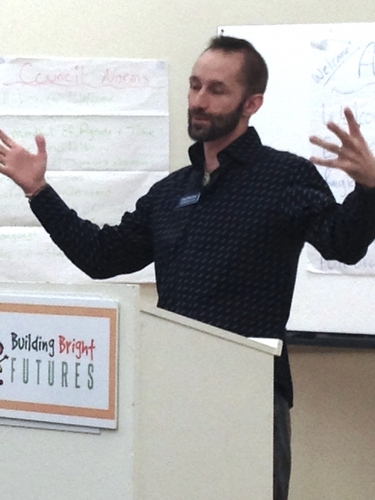BRATTLEBORO — The state of Vermont has increased its focus on early education for children in recent years.
Through new funding, such as the $36.9 million Race to the Top Early Childhood federal grant, or enacting legislation to provide universal publicly-funded pre-kindergarten, the state has sought to provide young children with quality, affordable childcare and education.
Windham County has its share of public and private organizations tackling the issue.
People working in the field, such as those at the Dec. 9 council meeting of Building Bright Futures (BBF), point to various barriers between families and quality, affordable programs.
Those barriers include understanding what programs are available, transportation, balancing when programs operate with shift work, or falling into the economic gap where a family earns too much to qualify for services, but not enough to pay for a program independently.
The audience represented approximately 30 organizations and state agencies.
BBF council member Chloe Learey told the audience that BBF acts as a bridge between private sector organizations and the public sector, most of which fall under the auspices of the Agency of Human Services.
“We are a group of people who care a lot about what happens to young children,” Learey said to the audience.
Despite the multitude of organizations involved in early childhood, it's hard to grasp how the system operates, she continued. That's because there is no system in the strict sense.
“It's an ecosystem,” Learey said. “Which is lovely and a nice word, but it's hard to grasp.”
BBF is the designated Early Childhood Advisory Group to the Governor's office. Through its 12 regional councils, the group attempts to link people providing services at the local level with the state to create a “dynamic” feedback loop, said Learey.
Learey also serves as the executive director of the Winston Prouty Center for Child Development.
The group is also responsible for oversight to the state's Early Childhood Framework and implementing its action plan. BBF advises the Governor and Legislature on issues related to early childhood.
“It's meant to be a dynamic process,” she said.
Learey, along with Chad Simmons, regional coordinator with BBF, highlighted the need to involve more private businesses in making Vermont a family-friendly place to live and work.
Connecting early education with economic development efforts can increase working family's access to quality programs, said Simmons and Learey.
Simmons added that the advisory council is speaking with Brattleboro Development Credit Corp., Southeastern Vermont Economic Development Strategies (SeVEDS), and local businesses. An event to develop strategies is proposed for early 2016.
According to audience members, making a workplace family-friendly can include programs or policies such as providing a place for women who are nursing to expel breast milk, providing a flexible spending account for childcare, providing paid sick leave, providing onsite childcare, or allowing employees flexible working hours or job sharing.
“This is all of us. These are our kids,” Learey said. “Nobody can do this by themselves. That's why it's important for people to come together.”
Simmons presented BBF's action plan for 2016 through 2018.
The council spent last year discussing goals and priorities, he said. Now come action steps.
BBF's four priorities are:
• All families have support, resources, and skills to raise thriving children.
• Children have quality early learning opportunities and are ready for school.
• Schools and communities are ready for children and families.
• There is an easily accessible early childhood system.
“[The system] needs to be accessible for every child and every family,” Simmons said.
The council intends to achieve these goals through existing programing, data collecting, supporting local employers and economic development agencies to create workplace policies, and identifying ways to streamline how families access programs or services.
“Hopefully, we can model at the local level what we'd like the state” to do, Simmons said.
Starting in small group discussions, audience members identified themes running through their efforts to serve families in Windham County.
Themes that emerged from the small groups included engaging the business sector, streamlining how people access services, creating more affordable childcare opportunities, and finding solutions to the “benefits gap.”
One group also discussed how the overall system of services and funding creates “accidental adversaries.” When the “system is a mess,” people working toward the same goal unintentionally collide fighting for resources, the group members said.
The spirit of what we all do remains straightforward, said Sue Graff of the United Way of Windham County. “We all want to see kids thrive.”
